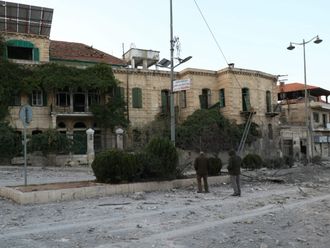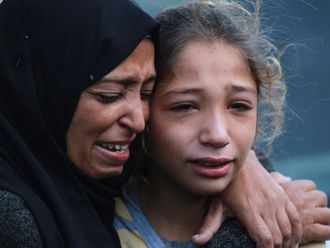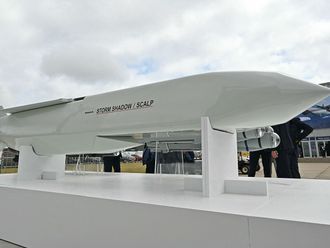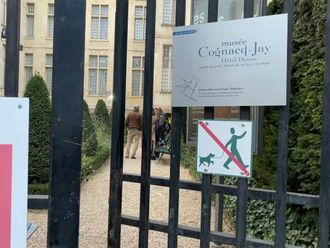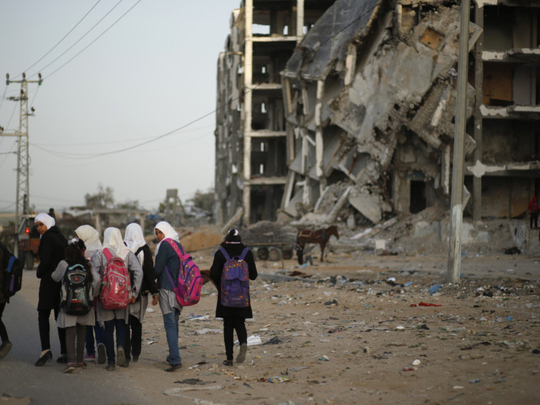
Khan Younus: In almost every way, the Gaza Strip is much worse off now than before last summer’s war between the Israeli regime and Hamas. Scenes of misery are one of the few things in abundance in the battered coastal enclave.
Reconstruction of the tens of thousands of homes damaged or destroyed in the hostilities has barely begun, almost six months after the ceasefire. At current rates, it will take decades to rebuild what was destroyed.
The economy is in deep recession; pledges of billions in aid have not been honoured; and Hamas, which controls the enclave, refuses to loosen its grip.
Diplomats, aid workers and residents warn of a looming humanitarian crisis and escalation of violence.
“After every war, we say it cannot get worse, but I will say this time is the worst ever,” said Omar Sha’aban, a respected Gaza economist. “There is no sign of life. Trade. Import. Export. Reconstruction. Aid? Dead. I’m not exaggerating when I tell my friends abroad: Gaza could collapse, maybe soon.”
At night, Gaza twinkles with thousands of campfires. Electricity is often available only six hours a day.
About 10,000 Gaza residents are still sleeping on the floors of UN-run schools. Many more are living in caravans or tents, or huddling in their bombed-out apartments. All told, 100,000 people remain displaced.
“He went blue,” said Moeen Khassi, the grandfather of a 5-month-old who died in his sleep in freezing temperatures in a gutted home near the former front lines. The family blamed the cold.
The 50-day Israeli war on Gaza left more than 2,100 Palestinians dead, almost 70 per cent of them civilians, according to the United Nations. Seventy-two Israelis were killed, most of them soldiers.
Cash assistance from the United Nations to displaced refugee families has stopped. The programme ran out of money last month.
With great fanfare, donors promised in October at a conference in Cairo to give $5.4 billion to the Palestinians, much of it for reconstruction. But virtually none of the pledges have been honoured, according to UN officials in Gaza.
East of the crowded Gaza city of Khan Younus, Adnan Abu Daqqa and his extended family live in tents left over from a previous war. He can’t remember which one. “You never throw anything away in Gaza,” said the 57-year-old farmer.
During the summer war, he said, Israeli tanks left trails across his farm. The family’s home is in ruins, levelled by Israeli explosives, he said. “We had animals, rabbits, goats, a horse.”
He held up a bridle. Where is the horse? He pointed to the sky.
He and the relatives he lives with, including six grown sons and their families, got $2,000 in war reparations from Hamas. His wife cooks food on an open fire. The children play in the rubble.
The Israeli regime has maintained a partial trade and travel blockade against Gaza since Hamas took over in 2007. These days, in a deal struck by the Israeli regime, the Palestinian National Authority and the United Nations after last summer’s war, families and their dwellings are assessed for damage by the United Nations, lists are provided to the Israeli military for clearance, and truckloads of steel bars and cement are allowed into Gaza.
In December, the most recent month for which figures are available, 2,259 truckloads of building materials entered Gaza. The United Nations estimates that to cover housing reconstruction and repair within three years, it would take 735 truckloads per day, seven days a week.
The Israeli regime restricts and monitors imports into Gaza.
“All this does is prevent civilians in Gaza from rebuilding,” said Sari Bashi, director of the Israeli human rights group Gisha. “The restrictions will have minimal to zero impact on Hamas tunnelling. They can rebuild using recycled materials.”
Gaza factories were hit especially hard during the war. One of the largest private employers in Gaza is the Alwada ice cream, potato chip and cookie factory. Its top two floors were gutted, damaged by Israeli shelling.
“We haven’t gotten a penny from the UN, NGOs, the Palestinian [National] Authority or Hamas,” said Alwada’s executive manager, Manil Hassan.
Company officials estimated the damage at $24 million. They tried to sue in Israeli courts but were denied jurisdiction. Hassan said the company could rebuild, if the Israeli regime would allow spare parts and a couple of Italian and Danish technicians to visit.
“We need them to show us how to fix their stuff,” Manil said, referring to the factory’s foreign-made equipment.
The factory has restarted two assembly lines to make cookies but is operating at a third of its capacity.
“Ice cream will have to wait,” Manil said.
Palestinians in Gaza say they are trapped more than ever in what they call an open-air prison. The Israeli regime restricts exits, allowing medical patients, business traders and some special humanitarian cases to cross.
For Gazans, the main portal to the greater world is the Rafah crossing into Egypt, which has been mostly closed since last summer’s war.
Mohammad Abu Anza, 19, was trying last month to get to the Cairo airport. He was awarded a scholarship to study engineering at a university in Algeria.
At the end of January, the crossing was open for three days. Desperate travellers pressed onto the buses to make it to the Egyptian side. On the third day, Anza won a seat on the 10th bus in line to leave. The Egyptians only allowed seven buses that day. Anza said he would try again, but then he turned away, because it looked as if he wanted to cry.
— Washington Post


